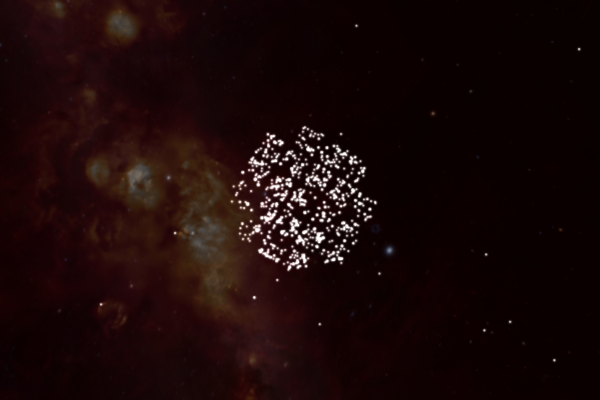Fixups for Numpy 2 compatibility |
||
|---|---|---|
| .config/cranko | ||
| .github | ||
| ci | ||
| docs | ||
| frontend | ||
| jupyter.d | ||
| pywwt | ||
| .check_enabled.py | ||
| .coveragerc | ||
| .gitignore | ||
| .readthedocs.yaml | ||
| .readthedocs_env.yml | ||
| CHANGELOG.md | ||
| LICENSE.rst | ||
| MANIFEST.in | ||
| README.md | ||
| pyproject.toml | ||
| pytest.ini | ||
| setup.cfg | ||
| setup.py | ||
| setupbase.py | ||
README.md
pywwt: WorldWide Telescope from Python/Jupyter
🚀🚀 Click here to try out pywwt in the cloud! 🚀🚀
Note: the cloud servers usually start up quickly, but if they were recently updated you may have to wait a few minutes for the backing software images to be rebuilt.
About
The pywwt package is the official toolkit for visualizing astronomical data in Python using WorldWide Telescope (WWT), a free, open-source astronomy visualization system. WWT includes a sophisticated 4D WebGL rendering engine and a cloud-based web service for sharing and visualizing terabytes of astronomical data.
With pywwt you can:
- Visualize and explore astronomical data interactively in the Jupyter and JupyterLab environments through an HTML widget
- Do the same in standalone applications with a Qt widget
- Load data from common astronomical data formats (e.g. AstroPy tables) into WWT
- Control a running instance of the WWT Windows application
The WorldWide Telescope project uses an open governance model and is fiscally sponsored by NumFOCUS. Consider making a tax-deductible donation to help the project pay for developer time, professional services, travel, workshops, and a variety of other needs.
Installation
The full pywwt documentation, including installation instructions, can be found at https://pywwt.readthedocs.io/.
Reporting issues
If you run into any issues, please open an issue here.
For Developers: Testing
To test your pywwt checkout, use the pytest command.
The pywwt test suite includes a set of image tests that generate imagery using the WWT Qt widget and compare the results to a set of reference images. This component of the test suite can be finicky, even when everything is working properly, because the details of the rendering are dependent upon your operating system and OpenGL implementation. If your setup is yielding visually correct results, but the test suite is not passing for you, you can fix that as described below.
For a bit more context, each “image test” generates a WWT visual and compares it to multiple reference images. If any of those images is sufficiently close to the WWT result, the test passes. So if you’re running the test suite and the comparisons are failing, you need add appropriate new images to the corpus.
For a test like image_layer_equ, the reference images are stored in the
subdirectory pywwt/tests/data/refimg_image_layer_equ. The filenames of the
reference images within that directory don't matter, and are intentionally
uninformative since the same reference image might match a wide variety of
rendering platforms.
If you run the test suite with the environment variable $PYWWT_TEST_IMAGE_DIR
set to a non-empty value, the WWT visuals generated during the test run will be
saved in the named directory. For any images that fail tests, difference images
with names resembling image_layer_equ_vs_a.png will also be saved. So to
update the image corpus so that the test suite passes for you, run the test
suite in this mode, then copy the failing images to the appropriate reference
image data directories. Don't forget to git add the new files! And you should
also verify that your new images do in fact look “reasonable” compared to what’s
expected for the test.
You can also run python -m pywwt.tests $imgdir1 $imgdir2 ..., where $imgdirN
are paths to directories or Zip files containing images generated during one or
more test runs. This will compare those images to the current corpus of
reference images, and indicate whether there are images in the reference corpus
that could potentially be removed. Note, however, that this is only safe if
your collection of $imgdirN spans all pywwt rendering platforms of interest.
If there’s a developer that runs the test suite on MacOS 10.10 and your
collection doesn't include those samples, you run the risk of breaking the test
suite for that person if you remove the reference files that they need. That
being said, it is quite possible for reference images to get out-of-date as the
rendering code and test suite evolve. On the third hand, deleting files from
the Git repository doesn't actually make it smaller, so removing old reference
images only helps a bit with housekeeping.
Continuous Integration and Deployment
This repository uses Cranko to automate release workflows. This automation is essential to the smooth and reproducible deployment of the WWT web services.
Getting involved
We love it when people get involved in the WWT community! You can get started by participating in our user forum or by signing up for our low-traffic newsletter. If you would like to help make WWT better, our Contributor Hub aims to be your one-stop shop for information about how to contribute to the project, with the Contributors’ Guide being the first thing you should read. Here on GitHub we operate with a standard fork-and-pull model.
All participation in WWT communities is conditioned on your adherence to the WWT Code of Conduct, which basically says that you should not be a jerk.
Acknowledgments
Work on the WorldWide Telescope system has been supported by the American Astronomical Society (AAS), the .NET Foundation, and other partners. See the WWT user website for details.
Legalities
The WWT code is licensed under the MIT License. The copyright to the code is owned by the .NET Foundation.

